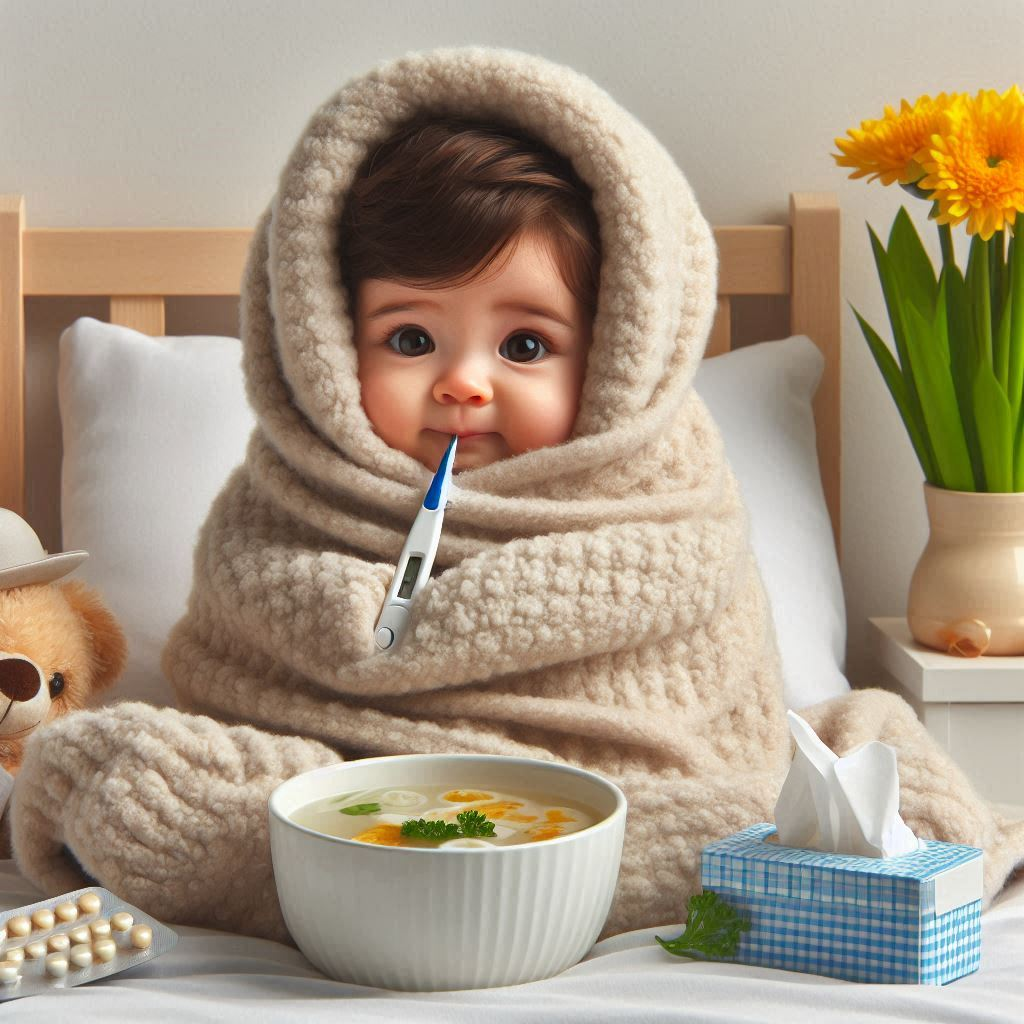How to Know if Your Baby Has Fever
As a parent, few things are more worrying than when your little one isn’t feeling well. Fevers in babies can be especially concerning, leaving you unsure of what to do or when to seek help. This guide will walk you through everything you need to know about recognizing and managing fevers in babies, giving you the confidence to care for your child during these challenging times.
Quick Answer
A baby has a fever if their rectal temperature is 100.4°F (38°C) or higher. Look for signs like warm skin, flushed cheeks, fussiness, and changes in eating or sleeping habits. Always use a reliable thermometer to confirm.
Understanding Fever in Babies
What Exactly is a Fever?
A fever isn’t an illness itself, but a sign that your baby’s body is fighting off an infection or illness. It’s a natural defense mechanism that helps the body kill off harmful bacteria and viruses. For babies, we consider it a fever when their rectal temperature hits 100.4°F (38°C) or higher.
Why Do Babies Get Fevers?
Babies can develop fevers for various reasons:
- Infections: This is the most common cause, whether it’s a cold, flu, or something more serious.
- Vaccinations: It’s normal for some babies to run a low-grade fever after getting their shots.
- Overdressing: Babies can’t regulate their body temperature as well as adults, so too many layers can cause overheating.
- Teething: While teething doesn’t usually cause high fevers, it can lead to a slight temperature increase.
How to Take Your Baby’s Temperature
Choosing the Right Thermometer
There are several types of thermometers available, but not all are suitable for babies:
- Rectal thermometers: These are the most accurate for infants and young children.
- Forehead (temporal) thermometers: These are quick and easy to use but may be less accurate.
- Ear thermometers: These aren’t recommended for babies under 6 months as their ear canals are too small.
- Oral thermometers: These aren’t suitable for babies as they can’t hold them under their tongue.
- Armpit (axillary) thermometers: These are the least accurate but can be used for a quick check.
Taking a Rectal Temperature: Step-by-Step
- Clean the thermometer with soap and warm water or rubbing alcohol.
- Put a small amount of petroleum jelly on the tip.
- Lay your baby on their back and lift their legs.
- Gently insert the thermometer about ½ inch into the rectum.
- Hold it in place until it beeps (usually about 10-20 seconds).
- Remove and read the temperature.
- Clean the thermometer thoroughly after use.
A Personal Touch: My First-Time Experience
I’ll never forget the first time I had to take my daughter’s temperature rectally. She was only two months old, and I was terrified of hurting her. My hands were shaking, and I must have checked the instructions a dozen times. But you know what? It wasn’t nearly as bad as I thought it would be. She barely fussed, and I felt so relieved to get an accurate reading. Trust me, you’ve got this!
Recognizing Fever Symptoms in Babies
Physical Signs to Watch For
While a thermometer is the most accurate way to check for a fever, there are other signs you can look out for:
- Warm or hot skin, especially on the forehead or tummy
- Rosy or flushed cheeks
- Sweating or clammy skin
- Shivering or trembling
Behavioral Changes
Fever can also cause changes in your baby’s behavior:
- Increased fussiness or irritability
- Decreased appetite or refusing to eat
- Changes in sleep patterns (sleeping more or having trouble sleeping)
- Less active or lethargic
- Crying more than usual
What to Do When Your Baby Has a Fever
Home Care Tips
If your baby has a mild fever, you can often manage it at home:
- Keep them hydrated: Offer frequent breast milk or formula feedings.
- Dress appropriately: Use light clothing and keep the room at a comfortable temperature.
- Rest: Let your baby get plenty of sleep.
- Cool compress: Gently wipe your baby’s forehead, wrists, and back of the neck with a lukewarm washcloth.
When to Use Fever-Reducing Medication
For babies over 3 months, you can use acetaminophen (Tylenol) if your doctor approves. Always follow the dosage instructions carefully. Never give aspirin to a baby or young child due to the risk of Reye’s syndrome.
When to Seek Medical Help
Call your doctor immediately if:
- Your baby is younger than 3 months and has a rectal temperature of 100.4°F (38°C) or higher
- Your baby is 3-6 months old with a temperature above 102°F (38.9°C)
- The fever lasts more than 24 hours in a baby under 2 years old
- Your baby shows signs of dehydration (dry mouth, no tears, fewer wet diapers)
- Your baby has a febrile seizure (convulsions caused by fever)
- Your baby seems very ill, unusually drowsy, or extremely fussy
Myths and Facts About Baby Fevers
Myth: Teething Causes High Fevers
Fact: While teething can cause a slight increase in temperature, it rarely causes high fevers. If your teething baby has a temperature above 100.4°F (38°C), it’s likely due to something else.
Myth: Fever is Dangerous and Can Cause Brain Damage
Fact: Fever itself doesn’t cause brain damage. Very high fevers (above 107°F or 41.7°C) can be dangerous, but these are extremely rare and usually caused by underlying conditions, not common illnesses.
Myth: You Should Always Try to Break a Fever
Fact: Fever is part of the body’s defense against infection. Unless your baby is uncomfortable or the fever is very high, it’s often best to let it run its course.
Preparing for Future Fevers
Creating a Fever Kit
Be prepared by having these items on hand:
- A reliable digital thermometer
- Acetaminophen (and dosage chart)
- Cool compresses
- Plenty of fluids
- Light, comfortable clothing
- Your doctor’s contact information
Keeping a Fever Log
When your baby has a fever, it can be helpful to keep a log. Note down:
- The temperature readings and times
- Any medications given (type, dose, and time)
- Other symptoms
- Eating and drinking habits
Conclusion: Stay Calm and Trust Your Instincts
Dealing with a baby’s fever can be scary, but remember, it’s often your child’s body doing its job to fight off infections. By knowing how to accurately check your baby’s temperature, recognize the signs of fever, and understand when to seek medical help, you’re well-equipped to handle these situations.
Trust your parental instincts. If something doesn’t feel right, don’t hesitate to contact your healthcare provider. They’re there to help and can provide peace of mind.
Remember, this too shall pass. With proper care and attention, your little one will be back to their happy, healthy self before you know it.
Next Steps
- Make sure you have a reliable digital thermometer at home.
- Familiarize yourself with the proper technique for taking your baby’s temperature.
- Save your pediatrician’s number in your phone for easy access.
- Consider creating a fever kit so you’re prepared for future illnesses.
By being prepared and informed, you can face your baby’s first (and subsequent) fevers with confidence. You’ve got this, parent!

Jessica Winter is a passionate parenting blogger with two years of experience guiding new and seasoned parents through the joys and challenges of raising babies. Her insightful posts blend personal anecdotes with expert advice to offer a warm and practical perspective on modern parenting.

